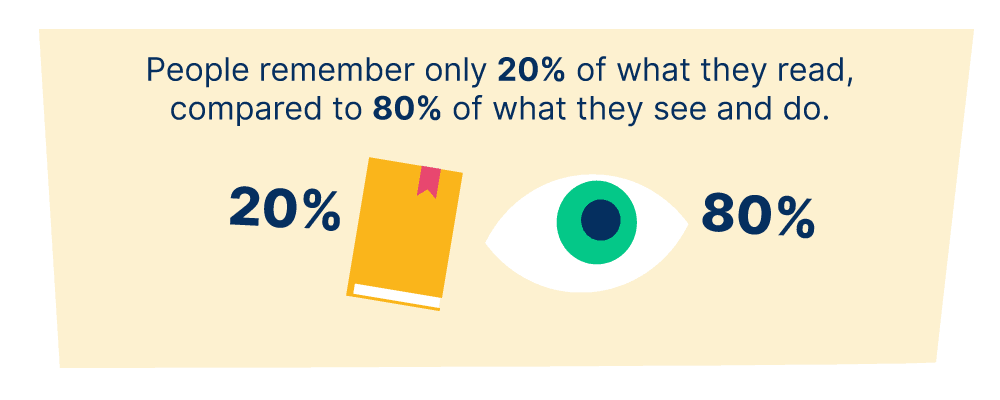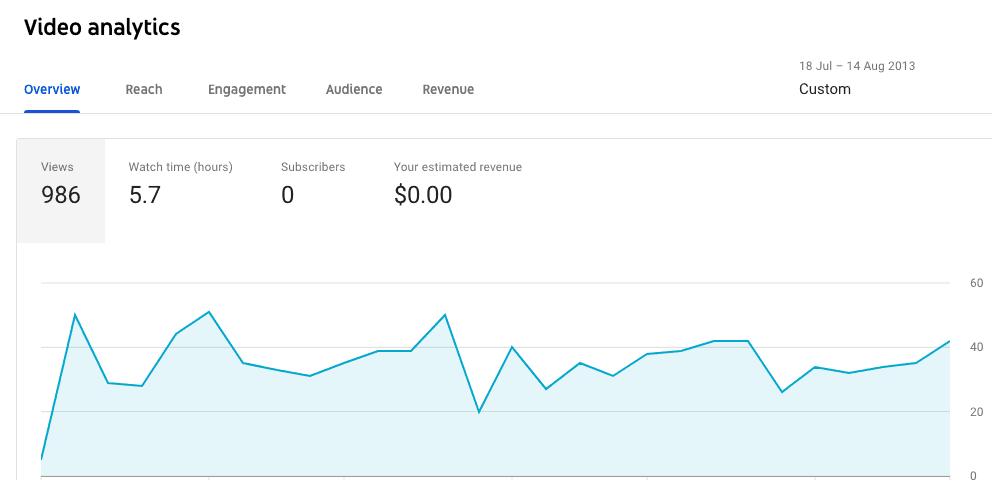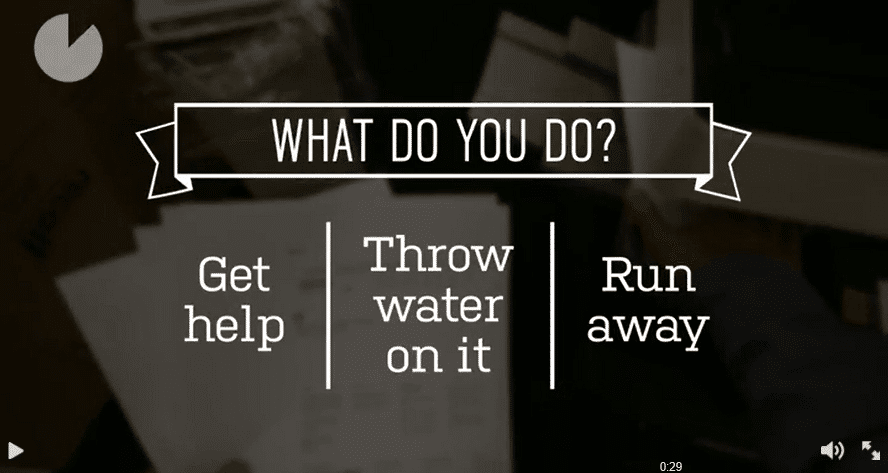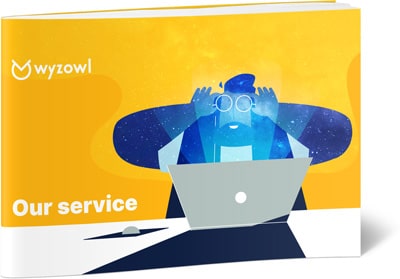Last updated on 27th October 2022
In this highly competitive climate for hiring top talent, a strong employee training and development programme is going to set you apart in your industry.
And not just when it comes to recruitment. Internal training is also great for retaining staff members.
According to LinkedIn’s Workforce Learning Report, a HUGE 93% of employees said they would stay at a company longer if it invested in their career.
When it comes to the practicalities of internal training, video is a phenomenal tool. Training videos are one of the most effective ways to develop your team, both in terms of cost and engagement.
In this article we’re going to take a look at 10 reasons why video is perfect for internal training…
1. It keeps costs down
Internal training can be a large investment. According to the US Training Industry Report, $87.6 billion is spent yearly on training expenditures – this includes things like payroll, travel, and other external products and services.
Investing in training videos can help to keep costs down as less is spent on external factors. When you create a training video, every penny you spend is going towards creating your training material.
And when you get your completed video(s) you don’t need to pay anyone to deliver the training or pay travel expenses to send your team anywhere. Internal training can be done from the comfort of your employees’ desks.
Plus, when you invest in training videos, you only pay once for a source that can be used endlessly, by multiple employees. The cost savings that come with this can be astronomical. Take Microsoft, for example. When they replaced their classroom training with video, their internal training costs were reduced from $320 per person to just $17 per person!
2. Better engagement
When it comes to internal training, it’s really important that your team are fully engaging with the content and are able to apply what they’ve learnt to their role later on.
According to our State of Video Marketing 2022 report, when it comes to learning about a product or service, most people prefer to watch videos.
Only 11% of people said they’d prefer to read text and just 3% of people would rather attend a webinar, but an impressive 73% said that, when it comes to learning material, they would choose to watch a video.
Here’s a training video we created for one of our clients, Nikwax:
This fun and useful animation was designed to help sales staff understand the product more and increase sales.
3. Increased retention
In addition to better engagement, internal training videos can also provide better retention. Retention of training materials is a must as people need this information in order to do their jobs to the best of their ability.
Video can be more memorable than written training materials because people tend to remember only 20% of what they read, compared to 80% of what they see and do.

In addition to that, videos can be played over and over again. So if retention is lost, employees can simply revert back to the video and refresh their memory.
4. It’s versatile
It’s easy to see that video is a versatile medium. There’s a variety of different styles, such as animation and live action, and also many different ways you can tell your story.
Video can be versatile in purpose, too. When it comes to internal training, you can create videos for:
- Introducing new products and services
- Demonstrating a new system or software
- Onboarding
- Continuous professional development
- Improving customer service skills
And anything else you need it for! Thanks to the cost-effectiveness of video, you can create a different one for each aspect of your internal training programme.
Before you know it, you’ll have a library of resources that you can refer to at any given time.
5. It’s measurable
The problem with most internal training materials, whether that’s classroom training or written documents, is that you can’t measure the results.
There’s no real way of knowing if everyone has engaged with the material, and to what extent.
Video, however, is easy to track and measure. You can do this through video hosting providers, like YouTube and Wistia.
If you’re using YouTube, login and click on the video you want to track. Then click on the ‘Analytics’ button below the player:

This will take you to a reporting screen where you can measure how many views the video has, the watch duration, and more:

If you’re on Wistia, click on the ‘Stats’ tab on the left-hand side:

The Wistia statistics are a little more visual, allowing you to see how impactful your training videos have been, at a glance.
To make your training even more measurable, you could also consider creating an interactive video. This way, you’ll know which team members have clicked on what – giving you a better understanding of their learning.
6. You can make it interactive
Interactive video is gaining more and more popularity, with 17% of video marketers planning to include it in their video marketing strategy in 2022.
Interactive video is great for internal training because it can be tailored to the different people watching. This means that people in management roles don’t need to watch the same training as entry-level employees, and vice versa.
Take a look at this Deloitte video for some inspiration:

Although this is more of a ‘company culture’ video, it certainly sparks the imagination of what you could do with interactive video when it comes to internal training.
If you ask questions, like the above, you can also record your employees’ answers to see who is performing well and who needs a little bit of extra help.
7. Everyone gets the same experience
Classroom training can be impacted by a number of variables – faulty technology, delayed public transport, even the day of the week can affect the engagement of classroom learners.
If you send a group for training on Monday morning, you might get a different result from those you sent on Wednesday afternoon.
However, when it comes to video you can ensure that everyone gets the same experience. All you have to do is hit play.
If you’re interested in getting a training video for your employees we can help you! Check out our training videos page for more information and examples. Train like a pro!
8. You can break down complicated information
Video is a great tool for breaking down complex information and ideas, and explaining them with the use of simple, easy to understand, visuals.
As an animated explainer video company, we know first-hand how complicated (or even potentially dry) topics can be made clear with the help of some engaging graphics.
Take a look at this video we made for Tonisity:
This video clearly breaks down, in a step-by-step way, how to prepare Tonisity’s pig feed – all in under one minute!
9. Easy onboarding
New hire orientation is an important part of any recruitment strategy. After all, you want new employees to feel welcomed and capable to start off in their new role with confidence.
According to a UK Learning & Development Report, 76% of companies believe that using training as part of their recruitment strategy gives their organisation a competitive advantage.
Video is a great tool for this because it can be used to cover everything from company culture to a walkthrough of daily tasks. You could even make a video for each individual purpose.
Here’s a great example of a company culture video from Canva:
This upbeat, energetic video tells new employees exactly what to expect from the business, while showing footage of the office and the colleagues that they’ll be working with.
The first few weeks at a new job can be overwhelming, and there’s always a lot to take in. But with internal training videos, your new recruits can feel safe in the knowledge that if they ever need a little refresher, all they have to do is find a video and hit play!
10. It’s accessible
Whether you have 10 employees, or 100, it can be difficult getting everyone in the same place at the same time.
If you need to travel to an instructor or a training facility, it can be even more difficult, with travel costs and the logistics of how everyone is going to get there.
Even if you do your own classroom training in-house, it can be tough to ensure your learning materials are accessible to everyone. After all, everyone learns at a different rate and has varying levels of expertise.
With video, you can eliminate all of these issues. All you need to do is send your team a link to the video and everyone can watch (and re-watch if they need to) at their own pace until they understand the content or topic at hand.
Next steps
So now you know all of the great reasons to use video for internal training, and you’re probably excited to get started on creating your own. But there are a couple of things you should think about first, such as:
- What style would be best?
- What should you focus on?
- What makes a good training video?
Luckily for you, we’ve created an online guide filled with tons of information about training videos, including case studies and examples.
And if you’d like the help of a professional and highly experienced video agency, check out our training video production page!







